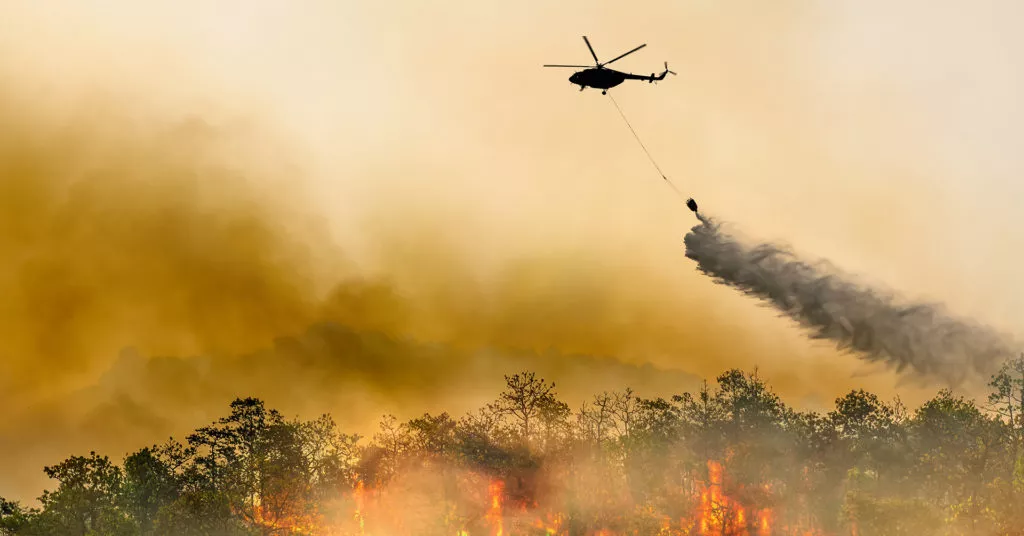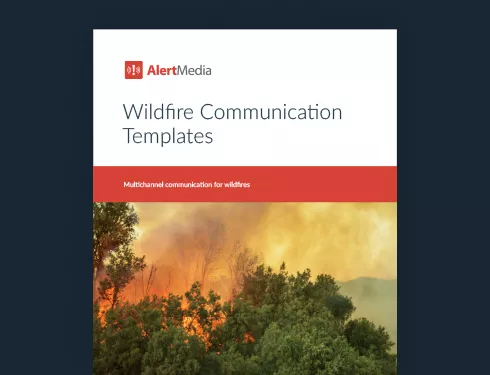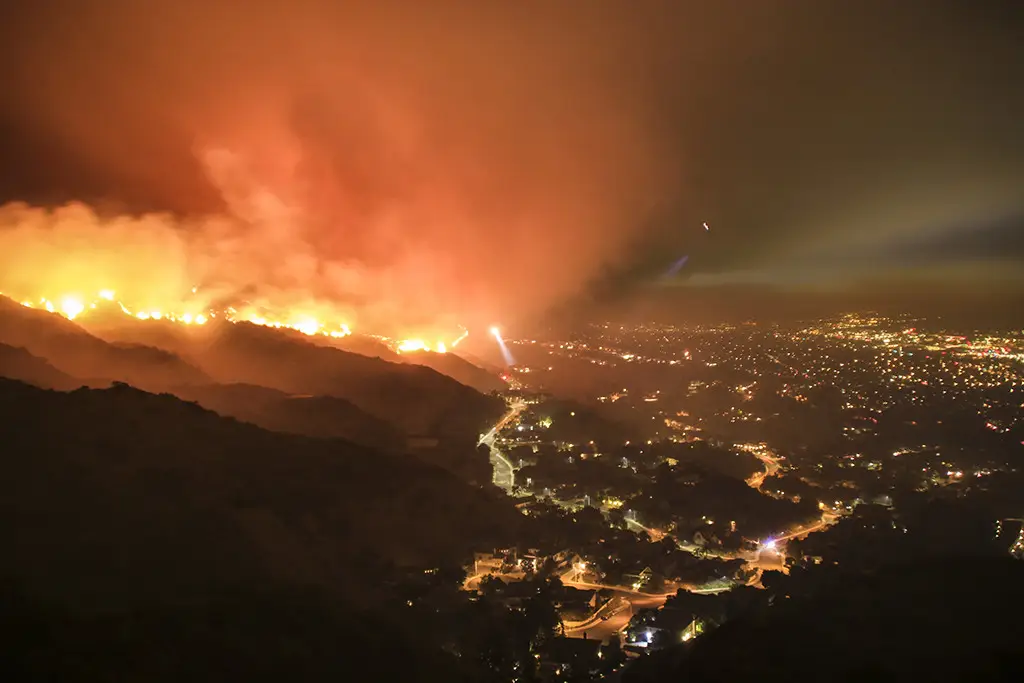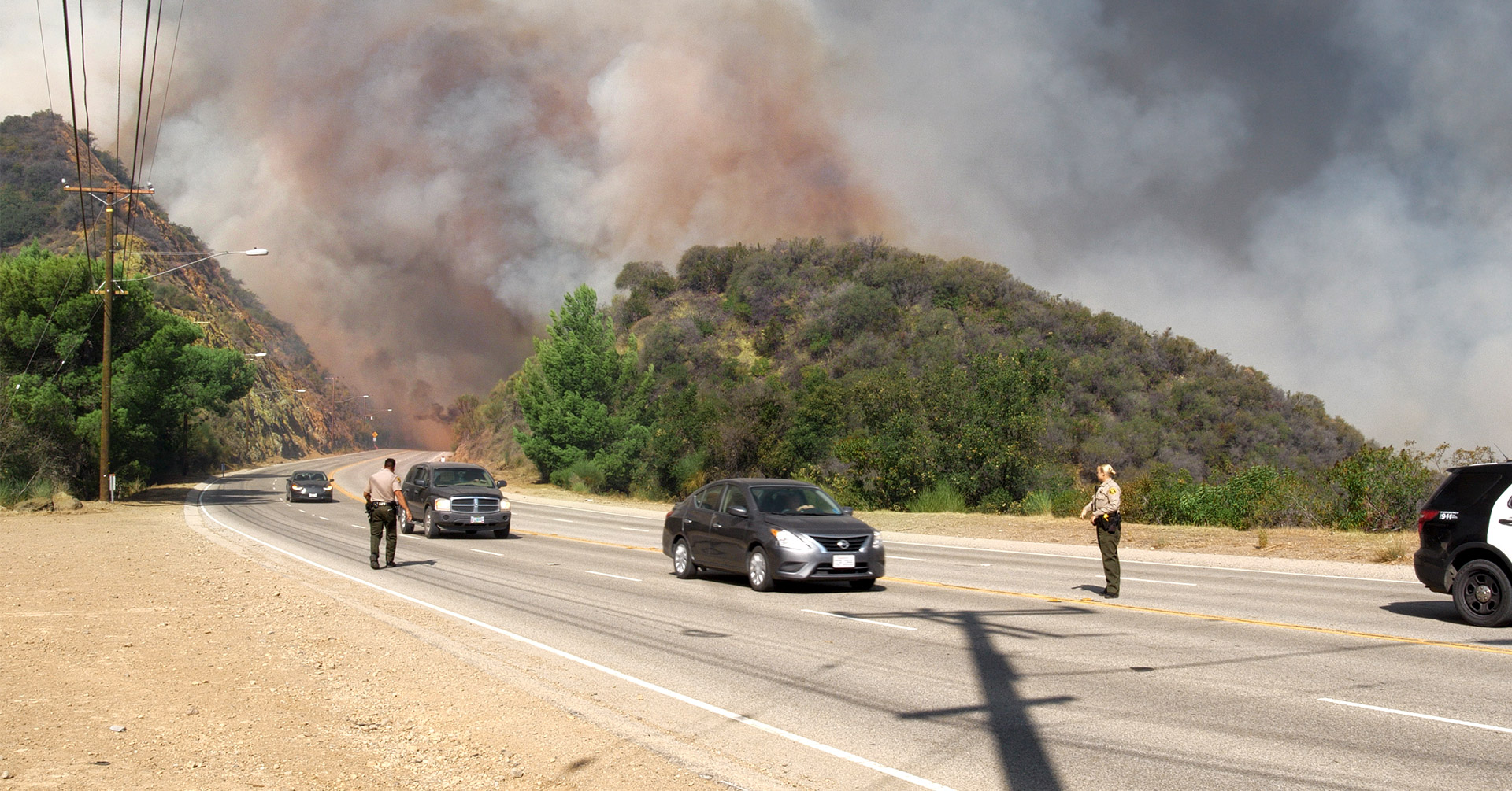
Optimize Wildfire Communications for 2024
As wildfire seasons get longer and more devastating, businesses need to take preparation seriously. Fill the holes in your wildfire communication now.

Every year, wildfires break sobering, destructive records. The U.S. Fire Administrator, Dr. Lori Moore-Merrell, told us on a recent episode of The Employee Safety Podcast, “In the last 17 years, we have had the 10 largest fires in U.S. history, just in the last short number of years. And that includes the Camp Fire, the Paradise Fire, the Woolsey Fire, and the Caldor Fire. We are looking at fires that are massive, over 100,000 acres burning. It’s a stunning amount of land. But there are also the home losses and the deaths that have occurred in these fires.”
Thousands of firefighters and other emergency workers are continually at risk of serious injury or death. Businesses close in the wake of the devastation, and entire communities grind to a halt. And worse yet? Wildfire seasons are lasting longer and causing more damage, calling for stronger business preparation for wildfires.
One of the biggest challenges businesses face during a wildfire is communication. Wildfires can grow from a small brush fire into an inferno that engulfs thousands of acres in a matter of hours, leaving little time to react.
During one fire in recent years, LA Times reported the challenges that county officials in California encountered when trying to send evacuation alerts. Some messages were delivered to too many people, others to too few, and still others failed to send at all—due to the complexity of the county’s emergency communication system and coding errors.
Having the right technology, processes, and training in place can ensure those in harm’s way get the information they need to protect themselves and their loved ones at a moment’s notice. In this article, we’ll go over best practices and tools you can use to make sure your wildfire communications system is poised to save lives and protect your organization.
Communication in Wildfire Preparedness
Government agencies and businesses alike struggle to effectively manage wildfire situations and impacts. Often, their challenges begin with the misconception that, as long as the boxes are checked for wildfire preparedness, the emergency response plan is sufficient.
In fact, one of the most common mistakes made by government agencies and businesses is simply not communicating about threats until it’s too late. As Stan Szyptek, President and CEO at Fire & Life Safety, Inc., said about his experiences with his clients, “Where many [businesses] could have done better… was they didn’t have communication capabilities in place to provide that warning.”
What Is a Wildfire Communication Plan?
A wildfire communication plan is a set of rules and procedures that help organizations keep in contact with their people before, during, and after a wildfire. Before a wildfire ignites, this plan helps identify reliable sources of information and plots out ways to relay that to your employees. During the fire and potential evacuation process, the plan dictates when and how to keep in touch with everyone. Then for after the fire has been contained or dies out, the plan lays out the process for confirming everyone’s safety and getting operations back to normal.
How to Approach Wildfire Communications
A wildfire communication plan should cover all three stages of a wildfire: before, during, and after.
Before a wildfire
Before a disaster like a wildfire strikes, it’s important to know how you will get in touch with everyone connected to your organization. And not just your employees: You might also need to reach your customers, suppliers, or even the public, depending on your location and the type of work your organization does. Your emergency response plan needs to include a mass notification system that can reliably reach your wide audience.
Gather as much contact information from your audience as possible, such as phone numbers, emails, home addresses, and the like. These redundancies will allow you to take advantage of multi-channel emergency notification system. Some tools even allow you to monitor user locations via location data from a mobile app.
Assess your organization’s level of wildfire risk, as well as the risk to individuals and specific business units. Communicate expectations and emergency response and evacuation plans to your team so they are prepared if and when a wildfire sparks to life in your area.
When a wildfire is approaching, the last thing you want to have to do is troubleshoot technology. After preparing your communication plan and tools, test everything to make sure it’s ready to go. Send your audience test messages, and identify anyone who didn’t receive them to expose errors.
Your emergency managers and employees will feel more comfortable in an emergency if they know that they can rely on you for prompt, helpful information.
During a wildfire
When the sky turns orange and a wildfire nears, it’s crucial to have a stream of up-to-date, reliable information on wildfire activity. Your local police and fire authorities are the best resources for this because they are the ones who will issue any wildfire evacuation notice, but local news and even social media can hold valuable information also. Some emergency notification systems natively integrate threat intelligence feeds from vetted sources and even in-house analysts.
Even with a robust notification system to strengthen your organization’s wildfire communications capabilities, you still need to focus on message frequency. If your users rarely receive any communication from you, they might feel abandoned and uncertain about what to do, which can leave them in harm’s way.
Then again, sending too many notifications can induce “notification fatigue.” After being bombarded with alerts, people tend to ignore or even disable them. Walking this line is a balancing act, but it can drastically increase the effectiveness of your wildfire messaging and emergency preparedness. If you find that a situation calls for more frequent updates, as a large wildfire might, you can set up an event page to supplement emergency alerts. Here you can gather additional information that you wouldn’t want to include in your alerts. These might include external links and multimedia elements like news stories or images, and longer summaries of the event. You can also link out to relevant support and aid providers like FEMA and ready.gov.
After a wildfire
When a wildfire is finally contained or dies out, emergency managers collectively sigh with relief. However, there’s still work to be done. Before you can resume business as usual, you have to check in with all of your people and assess the damage to your business or property. With a versatile messaging system, surveys and read confirmations are perfect tools to check on everyone: multiple-choice questions can quickly identify who needs help, and read receipts can give you peace of mind that the right people saw the alerts they need to.
Some employees impacted by the fire might not be able to work or must work in a new location due to road closures, property damage, or personal grief. Communicating in-office and remote work policies and procedures to your company will get your business up and running again as soon as possible. Be sure to remind your employees of the resources available to them so they can get back on their feet.
It’s paramount to have a wildfire emergency response plan takes all of this into account, but even then, there are some common roadblocks to keep in mind. We’ve broken down some of the most difficult elements of communicating during a wildfire and provided solutions so that your safety plans run smoothly.
7 Wildfire Communication Challenges and How to Conquer Them
1. Uncertainty about message receipt
With many emergency communication solutions, it’s difficult to know whether a message reached its intended audience. Often, a business utilizes one or two communication channels, such as phone and email, with no way to know if the intended recipient listened to or opened the alert.
Solution: Use robust communication software
Businesses need to leverage every line of communication they can, including phone calls, email, text messages, mobile app push notifications, social media, and intranet sites. An integrated, multichannel communication system gives businesses a quick way to reach all employees, no matter which device they’re using, and track the read rates of each message.
2. Inconsistent messages
Without the use of pre-built templates or clear protocols, it’s easy for messages to miss their mark. One study by the University of Oregon found that emergency messages during a wildfire are often conflicting or confusing, and that information is often old or inaccurate. This is especially true if multiple, uncoordinated agencies are sending messages.
Solution: Use pre-built templates and audience segmentation
An effective emergency communication system should offer templates that a user can pre-build for different situations, such as a wildfire. Take your time developing concise messaging in times of calm that you can instantly access and send in times of emergency. You should then segment messages according to the audience to reduce irrelevant information and ensure the right message is getting to the right people at the right time.
3. Misaligned internal priorities
Unfortunately, many businesses downplay the importance of emergency communications. Even State and Federal governments can fail to properly prioritize communication in inter- and intra-agency situations and in cases of public safety.
Solution: Move communication to the top of your list
We cannot overstate the value of communications to wildfire mitigation. Getting executive buy-in will ensure communication is a priority in your emergency response plan. Companies should invest in a comprehensive emergency communication system that gives businesses the ability to protect employees and maintain business continuity.
4. Unclear roles
As with any project, when roles and responsibilities are unclear, effective communication is nearly impossible. Unclear roles and responsibilities were identified as one of the major problems with the Sonoma County wildfire response. Executives and administrators who aren’t properly trained can cause more harm than good. Employees are misinformed, or worse, never receive the information they need to protect themselves or mitigate the emergency.
Solution: Designate and communicate roles
Every business should have roles and responsibilities clearly documented, communicated, and rehearsed. Outline who makes key decisions, who is responsible for project management of communications, who will gather information from various sources, etc. As you develop your plan, you should assign a specific person to every task.
5. Lack of training
As witnessed in the Sonoma County fires, all of the technology in the world won’t do much good if the people tasked to use it aren’t trained. Speed is paramount in an emergency. The longer it takes someone to figure out the communication system, the more lives are at risk.
Solution: Train often and well
Training should be at regular intervals with full role-playing involved. Businesses should expect every person with responsibility in the emergency plan to complete the training together in order to perfect coordinated efforts. Promote regular use of consistent communication with the system, establishing best practices along the way. Appoint skilled users as educators to lead and train others.
6. Lack of documentation
An emergency can be chaotic. Properly documented instructions are critical to adequate preparation and response. According to the independent assessment team that evaluated the Sonoma County response efforts in 2018, “Checklists or detailed procedures for deciding what warnings to issue, when, and in what form appeared to be almost entirely absent.” And available messaging templates did not include wildfires—leaving alert operators scrambling.
Solution: Document and distribute
Develop integrated standards of practice, document every step of the emergency procedure, and then distribute the protocol to stakeholders and employees. Make the procedure easy to follow by using graphics such as a flow chart. An overall plan should accompany each role’s individual responsibilities. Ensure accessibility by all stakeholders.
7. Inadequate technology
Some businesses lack appropriate emergency communication technology. Others use piecemeal email, phone, and internal communication systems. Still others have systems they don’t use properly. Conflicting and inconsistent use of technology causes confusion, drains resources, and wastes precious time.
Solution: Keep it simple
Technology doesn’t have to be complex. Invest in a single, integrated emergency communication system that offers flexible, scalable functionality. Make sure the people who will be using the technology receive proper training. They should be completely comfortable with it so that in an emergency they can activate it without delay.
Prioritize Clear Emergency Communication
Communication during wildfire season is high stakes.
During the California wildfires in 2017, officials admitted the “lack of communication is what prevented [residents] from knowing the fire was coming closer […] alerts were sent out, but not everyone […] received them.”
The KPMG assessment of the Fort McMurray wildfire found the same, saying there were “challenges due to a lack of consistent use of communication technology.”
Daniel Gonzales of the RAND Homeland Security and Defense Center said of the Camp Fire in California, “it should be possible to do much better…to minimize errors that might happen during a very stressful set of conditions.”
Mr. Gonzales is completely right. The seven challenges above tell much of the story—but one message underlies them all.
Simplicity alone can solve many of the challenges that businesses and state officials face in their communication. Complex, unintuitive systems require more training, result in more mistakes, and are less likely to be trusted in a critical situation. AlertMedia sets itself apart by providing a simple yet advanced emergency communication solution. We have helped thousands of customers communicate during wildfires and every other type of critical event—overcoming these communication challenges and keeping their people safe, informed, and connected.

![Wildfire Preparedness and Evacuation Checklist [Free Tool]](https://www.alertmedia.com/wp-content/uploads/2022/08/Blog-Wildfire-Safety-Checklist-v1.jpg)


